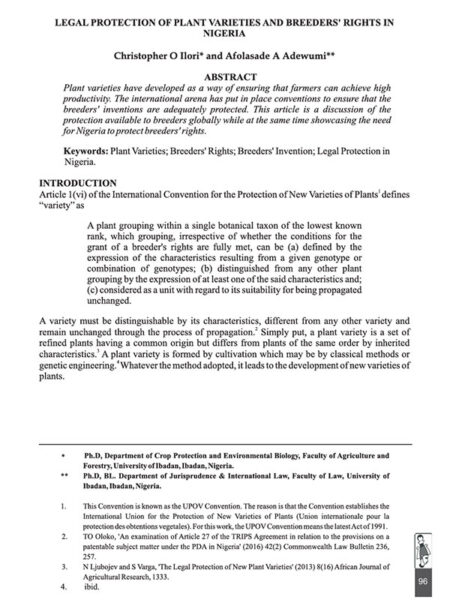Description
ABSTRACT
An Examination of Copyright Protection of Artificial Intelligence Generated Works in Nigeria
Tertsea Gabriel Joo*
The term Artificial Intelligence (AI) was first coined by John McCarthy in 1956 when he held the first academic conference on the subject, although the journey to understanding the capability of a machine to undertake specific tasks with little or no human intervention began earlier. Thenceforth, the world has witnessed an exponential increase in AI, which has featured in different facets of life like automated financial investing and trading, virtual travel booking agents, self-driving cars, and automated artworks, amongst others. With this technological advancement, it has become imperative to consider the issue of granting copyright protection to AI-generated works. In this paper, the author examines the Nigerian law on copyright protection alongside a few other jurisdictions to determine whether AI-generated works meet the Authorship, Ownership and Originality thresholds of copyright protection, the desirability or otherwise of copyrighting AI-generated works and in whom (if any) should the rights be vested – whether in the AI Programmer or User as well as who bears liability for copyright infringement by AI-generated works.
Keywords: Artificial Intelligence, Copyright Protection, Technological Advancement, Nigeria.
INTRODUCTION
Artificial Intelligence (AI) is a branch of computer science concerned with building intelligent machines capable of performing tasks that typically require human intelligence.1 Robotic artists have been involved in various types of creative works for a long time. Since the 1970s, computers have produced crude works of art, and these efforts continue today. Most of these computer-generated works of art relied heavily on the creative input of the programmer; the machine was, at most, an instrument or tool like a brush or canvas. But today, we are in the throes of a technological revolution that may require us to rethink the interaction between computers and the creative process. That revolution is underpinned by the rapid development of machine learning software, a subset of AI that produces autonomous systems capable of learning without being programmed explicitly by a human.2
As noted by Andres Guadamuz, ‘the rise of the machines is here, but they do not come as conquerors, they come as ‘creators’.3 AI machines have, in recent years, become capable of generating literary, dramatic, musical and artistic works that possess all of the external attributes of human creativity.
*LL.B (Benue State University), BL (First Class Honours). Counsel, Matrix Solicitors LLP; Abuja. Email: jo**********@***il.com.
- Rose Velazquez, Introduction to AI (Built-in 28 July 2022) accessed 1 May 2022.
- Guadamuz, ‘Artificial Intelligence and Copyright’ WIPO Magazine (5th edn 2017) accessed 1 May 2022.
- ibid









Reviews
There are no reviews yet.